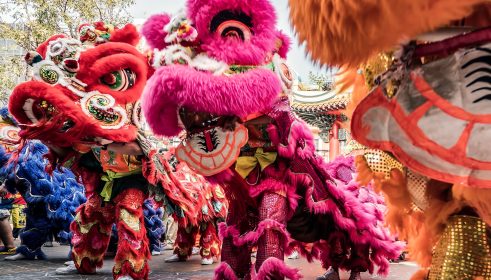UNESCO’s recent designation of Chiang Rai as a “City of Design” marks a remarkable achievement in the realm of cultural and artistic appreciation. This acknowledgment by the United Nations Educational, Scientific and Cultural Organization celebrates Chiang Rai’s rich heritage and innovative approach to design.
The recognition shines a spotlight on Chiang Rai’s dedication to artistic expression and its commitment to fostering creativity in urban spaces. As a Creative City of Design, Chiang Rai stands out for its unique blend of tradition and modernity, reflecting the essence of the vibrant Lanna culture.
Through this prestigious title, Chiang Rai joins a select group of cities worldwide that have been honored for their contributions to the creative arts. This accolade not only highlights the city’s past achievements but also sets the stage for a future filled with new possibilities and collaborations in the dynamic world of design.
To merit the UNESCO designation as a “City of Design,” a location must meet stringent criteria set forth by the organization. These criteria typically include factors such as a thriving creative industry, a rich cultural heritage that intertwines with contemporary design practices, and a vibrant community that actively engages with design in various aspects of daily life. Chiang Rai’s adherence to these criteria underscores its dedication to promoting design excellence and innovation.

Significance of the Designation
The UNESCO recognition of Chiang Rai as a “City of Design” holds immense significance on both a local and global scale. It not only highlights the city’s artistic and cultural prowess but also opens up opportunities for collaboration with other designated creative cities worldwide. This designation serves as a catalyst for further enhancing Chiang Rai’s creative infrastructure, attracting design enthusiasts, professionals, and tourists alike to explore the city’s unique design identity.
Chiang Rai’s vibrant creative scene has garnered global recognition, with UNESCO designating it as a “City of Design.” This accolade celebrates the city’s rich cultural tapestry and innovative spirit, making it a hub for artistic expression and architectural marvels.
One of the distinctive charms of Chiang Rai lies in its local artisans and craftspeople who infuse traditional techniques with contemporary flair. Strolling through the bustling markets, you’ll encounter an array of handcrafted goods, from intricate textiles to exquisite ceramics. These skilled artisans draw inspiration from the region’s heritage, showcasing a blend of craftsmanship and creativity that reflects Chiang Rai’s unique cultural identity.
Embracing the ethos of sustainability and cultural preservation, Chiang Rai’s artisans play a pivotal role in keeping age-old traditions alive while adapting to modern design sensibilities. Their dedication to quality and innovation shines through in each meticulously crafted piece, offering visitors a glimpse into the city’s artistic heritage and creative ingenuity.

Architectural Marvels in Chiang Rai
Chiang Rai is a treasure trove of architectural marvels that span centuries, blending contemporary designs with ancient influences. From ornate temples adorned with intricate carvings to modern structures that push the boundaries of design, the city is a living museum of architectural diversity.
The iconic White Temple (Wat Rong Khun) stands as a testament to Chiang Rai’s avant-garde architectural landscape, with its ethereal white facade and symbolic motifs. Visitors are captivated by the temple’s surreal beauty and innovative approach to traditional Thai architecture, offering a glimpse into the fusion of art and spirituality.
Exploring Chiang Rai’s architectural wonders reveals a tapestry of styles that reflect the city’s dynamic evolution and creative vision. Whether marveling at historic landmarks or contemporary masterpieces, each structure tells a story of Chiang Rai’s journey towards becoming a global hub of design and creativity.
With UNESCO’s recognition of Chiang Rai as a “City of Design,” the impact on tourism is expected to be significant. Let’s delve into how this designation will boost cultural tourism and enhance the international recognition and appeal of this enchanting city.

Entrepreneurial Opportunities
In Chiang Rai, the creative economy opens doors to a multitude of entrepreneurial opportunities. Local artisans, craftsmen, and designers have found a fertile ground to showcase their talents and turn their passions into viable businesses. From traditional handicrafts to modern art forms, the diversity of creative ventures in Chiang Rai is truly inspiring.
Entrepreneurs in Chiang Rai are encouraged to embrace their creativity and uniqueness, setting themselves apart in an increasingly competitive market. The province’s rich cultural heritage provides a solid foundation for creative businesses to flourish, attracting both local and international interest. Whether it’s silk weaving, ceramic artistry, or eco-friendly design, Chiang Rai offers a platform for entrepreneurs to showcase their skills and make a mark in the creative industry.

Innovation and Collaboration in Creative Industries
Innovation and collaboration are at the heart of Chiang Rai’s creative industries. Artists and creators in the province constantly push boundaries, exploring new techniques and merging traditional crafts with contemporary designs. The spirit of collaboration thrives as individuals come together to share ideas, expertise, and resources, fostering a vibrant creative community.
By harnessing the power of innovation, Chiang Rai’s creative industries continue to evolve and adapt to changing trends and consumer demands. From art galleries to design studios, the province buzzes with creative energy, inviting exploration and experimentation. Through collaborative projects and cross-disciplinary initiatives, creatives in Chiang Rai are breaking new ground and propelling the local creative economy forward.
In conclusion, Chiang Rai’s designation as a “City of Design” not only celebrates its past achievements but also sets the stage for a vibrant future in the realm of creativity and innovation. Entrepreneurs and creators in the province are embracing the opportunities that the creative economy offers, driving forward a dynamic landscape of artistry and commerce.
Thailand’s Songkran Festival Gets Formal UNESCO Certification
Thailand’s Songkran Festival Gets Formal UNESCO Certification












